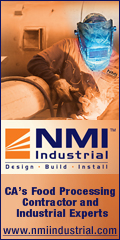
| Archives/Subscribe | www.clfp.com | Contact Us | July 2, 2013 |
Non Union Employers Beware: OSHA Has Just Become A Union Organizer
In a little-publicized letter of interpretation, dated April 5, 2013, the Occupational Safety and Health Administration (OSHA) announced for the first time that during an OSHA inspection of non-union worksites, employees can be represented by anyone selected by the employees including outside union agents. In so doing, the letter, issued to the Steelworkers Union earlier this year, OSHA Deputy Assistant Secretary Richard Fairfax gave the green light to allowing union officials and community organizers to serve as the "employee representative" and thus accompany OSHA inspectors when doing inspections of non-union workplaces. This development provides a welcoming open door to many union organizers in those industries sought after by labor organizations. OSHA’s Previous Policy Until now, OSHA’s policy has been to allow union representatives to be the "employee representative," but only when the inspection involves a unionized workplace. Historically under Section 8(e) of the Occupational Safety and Health Act of 1970 ("the Act"), the union had to be a recognized representative – in other words a union "certified" by the National Labor Relations Board to act as the employee representative in an OSHA inspection. OSHA’s New Pro Union Interpretation According to OSHA’s new interpretation, non-union employees can select a person who is affiliated with a union or a community organization to act as their "personal representative" in filing complaints on the employees’ behalf, requesting workplace inspections, participating in informal conferences to discuss citations, and challenging the abatement period in citations being contested by an employer. The interpretation letter goes on to state that "a person affiliated with a union without a collective bargaining agreement or with a community representative can act on behalf of employees as a walkaround representative." Under this expansive interpretation, not only can union organizers be designated as the "employee representative" but also individuals such as community activists or perhaps even plaintiff lawyers could participate in an OSHA inspection on behalf of some of the employees. OSHA’s new policy will undoubtedly encourage unions to get involved in OSHA inspections and complaints in non-organized facilities as a means of gaining access to the facility, where they normally would not have access. This change in OSHA policy will certainly be a big boost to union organizing efforts. OSHA’s new interpretation goes directly against its own current Field Operations Manual (FOM). The FOM, in pertinent part, states:
OSHA’s new interpretation also goes against its own inspection regulation. Section 1903.8 of the OSHA inspection regulations states in part that:
Company Responses To OSHA’s New Pro Union Interpretation The new interpretation letter also raises many questions that have not yet been addressed and may lead to legal issues including:
Employers should first be aware that they have the right to refuse a walkaround inspection on any basis and require OSHA to get a warrant. One option for employers is to advise the OSHA compliance officer that it will permit OSHA to conduct its inspection but it is refusing entry of any third party. OSHA may treat this as a "refusal of entry" and seek a warrant. When before a federal district court judge reviewing the request for the warrant, the Judge may note the contradictions in the Act and OSHA regulations and deny the warrant. Alternatively, this time could be used for the Company to clarify how the questions above are being interpreted and answered. However, remember that you will not be allowed to participate in or argue on their behalf in the "ex parte" warrant application proceedings. If the warrant is issued by the federal district court judge you would have to decide whether to move to quash the warrant or otherwise oppose it if OSHA attempts to enforce the warrant in federal court. While requiring a warrant might not be the most favorable approach for some employers, it may prevent the excess use of walkaround inspections for organizing non-union workforces if the warrant is ultimately quashed.
It is clear that the new interpretation letter directly contradicts the express language of the Act and OSHA’s regulation. So why come out with the new interpretation and what purpose does it serve? What it does is open the door for an OSHA inspection to become a union organizing tactic. While unions have shrunk in the private sector - representing 7.3% of the workforce as of 2012 - they are doing everything possible to increase their ranks while they have a friendly and cooperative administration. Companies should begin working now to know there rights during an OSHA inspection and protect against the possibility that the third party selected for a walkaround inspection is a union organizer. |
|
| CALIFORNIA LEAGUE OF FOOD PROCESSORS 2485 Natomas Park Dr., Suite 550 Sacramento, CA 95833 Phone: (916) 640-8150 Fax: (916) 640-8156 www.clfp.com |
 |


